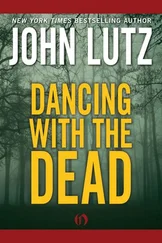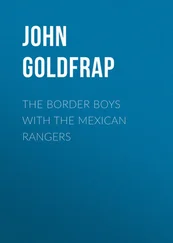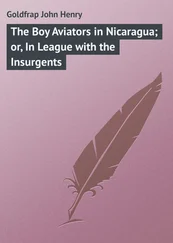John Wohlstetter - Sleepwalking with the Bomb
Здесь есть возможность читать онлайн «John Wohlstetter - Sleepwalking with the Bomb» весь текст электронной книги совершенно бесплатно (целиком полную версию без сокращений). В некоторых случаях можно слушать аудио, скачать через торрент в формате fb2 и присутствует краткое содержание. Город: Seattle, Год выпуска: 2012, ISBN: 2012, Издательство: Discovery Institute Press, Жанр: История, military, Политика, Публицистика, на английском языке. Описание произведения, (предисловие) а так же отзывы посетителей доступны на портале библиотеки ЛибКат.
- Название:Sleepwalking with the Bomb
- Автор:
- Издательство:Discovery Institute Press
- Жанр:
- Год:2012
- Город:Seattle
- ISBN:978-1-93659-906-6
- Рейтинг книги:3 / 5. Голосов: 1
-
Избранное:Добавить в избранное
- Отзывы:
-
Ваша оценка:
- 60
- 1
- 2
- 3
- 4
- 5
Sleepwalking with the Bomb: краткое содержание, описание и аннотация
Предлагаем к чтению аннотацию, описание, краткое содержание или предисловие (зависит от того, что написал сам автор книги «Sleepwalking with the Bomb»). Если вы не нашли необходимую информацию о книге — напишите в комментариях, мы постараемся отыскать её.
RICHARD PERLE, Resident Fellow, American Enterprise Institute and Assistant Secretary of Defense, 1981–1987 Sleepwalking with the Bomb
Sleepwalking with the Bomb — читать онлайн бесплатно полную книгу (весь текст) целиком
Ниже представлен текст книги, разбитый по страницам. Система сохранения места последней прочитанной страницы, позволяет с удобством читать онлайн бесплатно книгу «Sleepwalking with the Bomb», без необходимости каждый раз заново искать на чём Вы остановились. Поставьте закладку, и сможете в любой момент перейти на страницу, на которой закончили чтение.
Интервал:
Закладка:
Asked once how a world war would start, German Chancellor Otto von Bismarck, who united Germany during his long late nineteenth-century tenure, is reputed to have quipped: “some damn fool thing in the Balkans.” On June 28, 1914, the assassination of the Austrian archduke Francis Ferdinand by Bosnian Serb ultranationalist Gavrilo Princip set in motion a series of events that in five weeks triggered the Great War.
First, in Germany, France, and Russia, poisonous ultranationalist sentiments incited popular support for a war expected to last at most a few weeks. The same sentiments drove the conflict even after the calamtous carnage of the opening months alerted leaders to the monstrous destructive power at their command.
Second, individual leaders—Winston Churchill notably excepted [17] In 1900, his first year in Parliament, Churchill warned that a European war would be far more costly than colonial wars. It would involve a long, all-out effort engaging the entire population and suspending operation of peaceful industries. Said Churchill: “Democracy is more vindictive than Cabinets. The wars of people will be more terrible than the wars of kings.”
—lacked meaningful understanding of the destructive power of emerging military technologies, especially the artillery barrage and machine-gun fire. The resulting futile sanguinary conflict was prolonged by the public’s desire to see revenge exacted from the enemy for inflicting mass casualties. Commanders shockingly indifferent to the fate of their subordinates sent them in endless charges across no-man’s-land moonscapes, unable to imagine anything beyond premodern notions of martial spirit to counter massive firepower.
Third, and perhaps most significant of all, technologies of destruction had simply outrun technologies of command, communications, and control. Once troop trains left their home depots, those authorizing departure could not reverse their passage. Between the trenches messengers sprinted on foot or rode on horseback, as had been done for thousands of years. There were limited telegraph lines suitable for fixed installation for intermittent communications with battlefield commanders, and virtually no radio communications to allow true real-time communication.
A fourth factor—the intense revulsion over war following the devastation of World War I—is also instructive for Western nations looking towards the Middle East today. The failure to control arms during battle led to attempts to control arms via diplomacy, and to an international organization, the League of Nations, charged with keeping peace. Those attempts were trampled under the jackboots of totalitarian Axis tyrants who armed for and ultimately started wars, while the memories of modern war’s grisly toll paralyzed the leaders of the free world.
The most worrisome problem posed by hostile states—Islamic or otherwise—is the mental state of their leaders and the fear that deterrence may not work against millenarian zealots. During the Cold War the Soviet leaders were, in the main, rational calculators. While ruthless adversaries, they were acutely cognizant of the potential consequences of starting a nuclear war. Even Joseph Stalin, paranoid mass murderer of tens of millions, confined his strategic goal to victory without fighting a war.
Later Soviet leaders were similarly deterred. Leonid Brezhnev seriously considered a preemptive nuclear strike against China in 1969, when the two countries engaged in a series of bloody clashes along their Ussuri River border. At the time Russia’s arsenal vastly exceeded that of China, whose nascent program had produced perhaps 25 to 40 bombs. But Brezhnev decided to pass. Had Brezhnev struck China first, his chance to get a strategic arms pact with America would have evaporated. America’s immense arsenal troubled him more than China’s relatively puny one at the time. [18] Late in the Cold War similar fears arose inside the Kremlin, though they were without foundation in fact. In 1983, Brezhnev’s successor, Yuri Andropov, reportedly feared a first nuclear strike from the planned NATO deployment of 108 Pershing II missiles, which could span the 1,000 miles from their Western European bases to Moscow within eight minutes and with great accuracy. One possible set of targets was command centers in Moscow. Andropov considered but ultimately declined to launch a preemptive nuclear attack on America. At that time, Fidel Castro reportedly asked—as he had during the 1962 Cuban Missile crisis—that the Soviets launch an all-out strike at the United States. Adrian Danilevitch, a former top Soviet war planner, described how Moscow “had to actively disabuse him of this view by spelling out the ecological consequences for Cuba (in a nutshell, it would disappear) of a Soviet strike against the U.S.” Castro’s request went nowhere.
Once indeed the world did come to the very brink of a shooting nuclear war, during the Cuban Missile Crisis. Let us return to 1962, and see what context this story can give us to apply to Iran today. That August, U.S. reconnaissance planes discovered that Russian construction teams were placing intermediate-range ballistic missiles at bases in the Cuban countryside. In response, the Kennedy administration imposed a naval “quarantine” (blockading contraband supplies only) around the island.
On October 15, Kennedy convened an executive committee of 13 “wise men” to suggest ways to resolve the crisis. Their firmly shared belief was that it was unacceptable to have Russian missiles armed with nuclear warheads sitting 90 miles south of Florida. One of them, Paul Nitze, wrote later that at the outset nearly all “ExComm” members—including the president and his brother Robert—believed that military action to remove the missiles was almost inevitable. In his Cuban Missile Crisis history, Nine Minutes to Midnight, Michael Dobbs superbly described what happened next.
On October 27, which the White House dubbed “Black Saturday,” things nearly spun out of control. A U.S. U-2 spy plane was downed and its space-suited pilot killed, by a Soviet surface-to-air missile at Castro’s orders. Another U-2 pilot on an Arctic surveillance mission was tricked by an intense aurora borealis (“Northern Lights”) into taking a wrong turn, penetrating 300 miles into Soviet airspace. That spy plane eluded Russian interceptors and by a major miracle made it back to friendly territory. This was not a true fail-safe scenario (inability to recall in time a hostile plane carrying bombs), as the plane was unarmed, but a shoot down would hardly have helped resolve the crisis.
Meanwhile, a U.S. destroyer was dropping depth charges to force a quarantine-breaking Russian diesel submarine to surface. Unbeknownst to the destroyer crew, the sub was armed with a 10-kiloton nuclear-tipped torpedo, some 70 percent as powerful as the Hiroshima bomb. Its commander was under strict orders not to fire a nuclear device without direct authorization from Moscow, but only by surfacing could the sub exchange messages with the authorities. But after being tracked by U.S. ships continuously—and being forced to stay below despite tropical conditions inside the sub—the Soviet commander was ready to fire his nuclear torpedo. His crew prevailed upon him to surface instead, noting the lack of authorization from Moscow. The sub surfaced to find itself in the midst of four U.S. destroyers. Moscow ordered the sub to depart the area, and the U.S. did not try to stop its departure. Had the submarine commander used his nuclear torpedo in 1962, it is inconceivable that Kennedy would have responded with an all-out attack over the loss of one of four small ships. It is hard to credit assertions that the USSR would have chosen mutual annihilation either.
Читать дальшеИнтервал:
Закладка:
Похожие книги на «Sleepwalking with the Bomb»
Представляем Вашему вниманию похожие книги на «Sleepwalking with the Bomb» списком для выбора. Мы отобрали схожую по названию и смыслу литературу в надежде предоставить читателям больше вариантов отыскать новые, интересные, ещё непрочитанные произведения.
Обсуждение, отзывы о книге «Sleepwalking with the Bomb» и просто собственные мнения читателей. Оставьте ваши комментарии, напишите, что Вы думаете о произведении, его смысле или главных героях. Укажите что конкретно понравилось, а что нет, и почему Вы так считаете.












